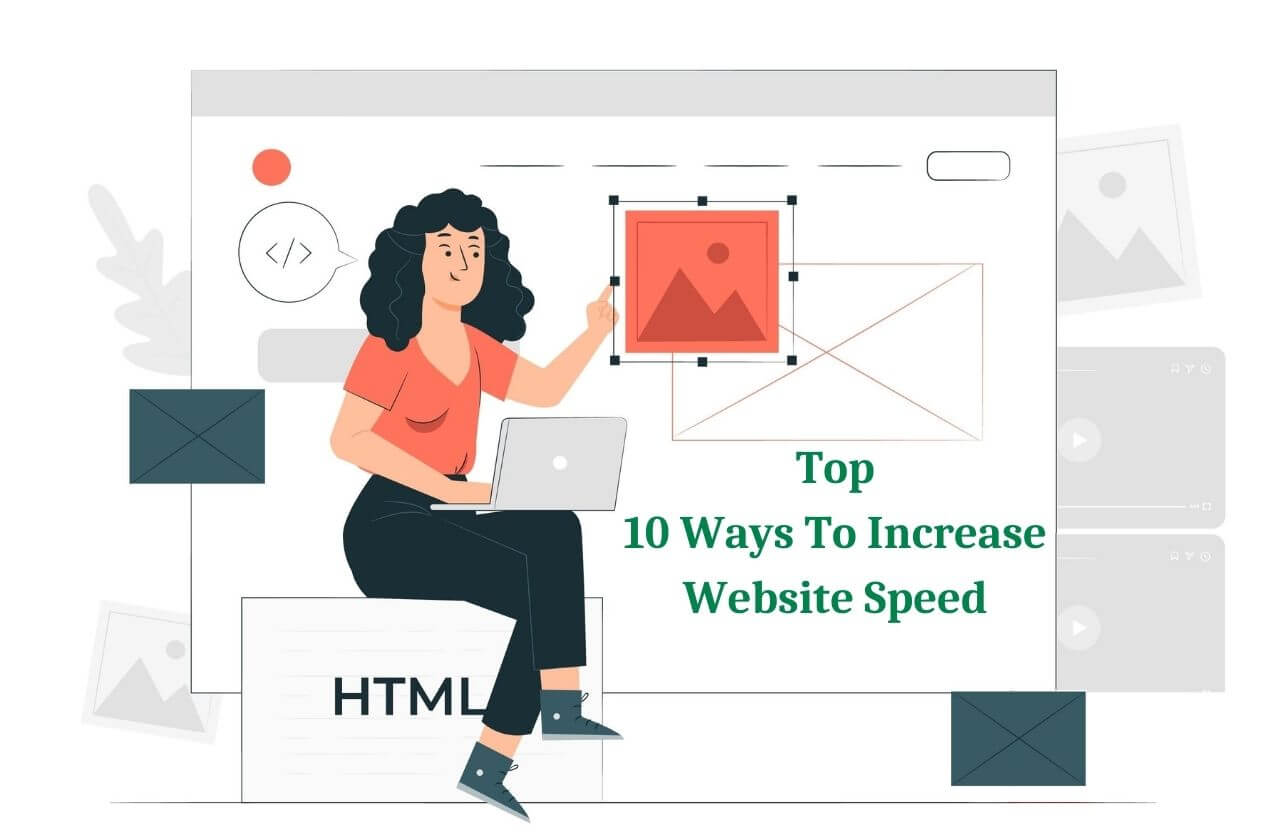Website speed has more significance than what you can probably imagine. Previously, website design and development gave special importance to website speed. But due to design dynamics changing frequently and fast internet speed, focus on page speed took a backseat.
Today, optimization of website speed has gained importance again due to the increasing use of digital marketing for business growth and profits. The negative effects of a slow loading website pages range from low page views, higher bounce rate, no engagement, less customer satisfaction and no sales and conversions. As you can see, low website speed can tarnish the brand image and repel valuable customers.
Good website speed can in turn boost visitor engagement and help in converting the visitor to customer. It is possible because of easy and fast navigation, quick information consumption and hassle-free engagement options. All this is possible when website speed is top-notch.
So, what are some of the ways in which you can increase the website speed? Just like how social media marketing tools boost social media performance, we have listed 10 most popular methods website optimization experts use to boost website speed.
1) Image Optimization
Responsive design is a new concept in the website design field. This enables images to resize according to the device used by the customer or visitor and depends on the size of the screen.
Today, there are new image formats which are supported by almost all browsers and it reduces image sizes considerably. Loading time can now be improved by using image sprites. You can use image sprite for images to reduce server calls to load the subsequent page. This works well in HTTP/1.1.
2) Server Response Time
Server response time depends on various factors like the amount of traffic received, resources received by page, software used by the server and the hosting platform. The experts consider the best response time to be under 200 ms. To achieve this goal of improved server response time, you can speed up the website DNS by choosing a faster website DNS provider as well.
Moreover, you can check for issues like memory availability, database queries which are slow or slow routing.
3) Browser Caching
Caching can be defined as the storage of resource in a temporary storage system so that it can be used quickly when needed. Different type of caching includes page caching, database caching, and browser caching.
You should focus on improving browser caching as it stores parts of the page you visit in the browser. It can be done by setting up a time period for information to be cached. This will make it easy to reload the page. Browser caching feature will help improve the customer experience visiting your website page again.
4) CSS, JavaScript, HTML
You might very well know that CSS, JavaScript and HTML are coding languages used to design website. Optimizing the codes and removing unwanted elements like commas, spaces and characters can boost website speed. Another thing you can plan to do is to remove comments, codes that are used and formatting.
5) Redirects
There are various reasons due to which redirects are given to pages on the website. It includes SEO links and leading visitor to a secure version of HTTP or HTTPs. But it is important to know that a visitor would need extra time to visit a redirected page because of the HTTP request-response cycle to complete.
Another way to increase website speed is to avoid chained redirect which is a redirect that leads to another redirect.
6) HTTP Requests
Whenever an individual website page loads, the real transfers are done using HTTP requests. This single request fetches a resource. Therefore, the loading time of the page increases with more requests made.
You can reduce a load of HTTP requests by combining similar resources, minimizing DNS lookups and using the Keep-alive technique which helps in not terminating the request when resource download is complete.
7) Hosting
Most often, people opt for hosting platforms which are cheap. But the problems begin when your website getting traffic. Of course, trusted hosting platforms are a must. Additionally, you can choose different options like Shared, VPS hosting and Dedicated Server.
The best option to boost website performance is to use VPS hosting and dedicated server for hosting.
8) Compression
You can use software application like Gzip for compressing the files. Experts suggest that the CSS, JavaScript and HTML files must not be larger than 150 bytes.
9) Lazy Loading
It is a helpful technique which enables content to load when it is going to be into view. This boosts page speed performance as unnecessary content do not load for visitors and frees up the browser.
10) Mobile Optimization
Responsive web design and Accelerated Mobile Pages – AMP are some of the interesting developments which can be used for mobile optimization of pages. Avoid using flash and pop-ups. As the world is moving to the mobile-centric ecosystem, it is best to optimize website page speed for mobile devices.
These are the top 10 ways to increase website speed. If you want to learn in-depth about website development and design, enrol at Basecamp Digital. We also provide excellent SEO, SEM, and Social Media Marketing Training in Mumbai.




